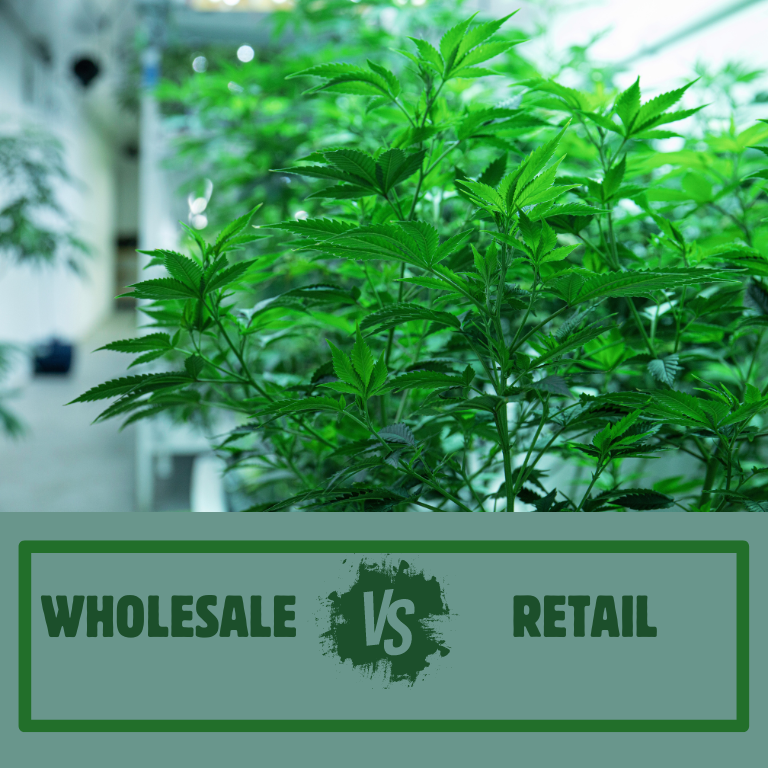Comparing Cannabis Wholesale and Retail Distribution

The cannabis industry, marked by rapid growth and evolving regulations, offers various avenues for distribution, primarily through wholesale and retail channels. Understanding the differences between these two distribution models is crucial for businesses navigating this dynamic market. This article explores the nuances of cannabis wholesale and retail distribution, highlighting their unique advantages, challenges, and considerations for choosing the best approach for your business.
Understanding Cannabis Wholesale Distribution
Wholesale distribution in the cannabis industry involves the sale of bulk products from producers or distributors to retailers or other businesses. This model plays a crucial role in the supply chain, facilitating the movement of large quantities of cannabis from cultivators and manufacturers to dispensaries, processors, and other end-users. Key players in the wholesale market include cultivators, processors, and specialized wholesale distributors. This distribution model benefits producers and retailers by allowing efficient inventory management and providing a steady supply of products.
Understanding Cannabis Retail Distribution
Retail distribution, on the other hand, refers to the direct sale of cannabis products to consumers. This model includes various types of retail outlets such as dispensaries, delivery services, and online sales platforms. Retailers engage directly with consumers, offering a range of products including flowers, edibles, concentrates, and topicals. Retail distribution is characterized by its focus on customer service, brand development, and a personalized shopping experience.
Key Differences Between Wholesale and Retail Distribution
The primary differences between wholesale and retail distribution lie in the volume of sales, pricing strategies, and customer relationships. Wholesale deals with bulk transactions, often at lower per-unit prices due to the larger volumes, while retail focuses on individual consumer sales at higher prices per unit. Wholesale distributors generally have limited interaction with the end consumer, whereas retailers build direct relationships with their customers, which is crucial for brand loyalty and customer retention.
Legal and Regulatory Considerations
Both wholesale and retail distribution are subject to stringent legal and regulatory requirements. Compliance includes licensing, reporting, and adherence to quality and safety standards. Wholesale distributors must ensure that products are tested and labeled according to regulations before selling to retailers. Retailers, in turn, must comply with local laws regarding sales, advertising, and consumer education. Navigating these regulatory landscapes requires careful planning and legal expertise.
Benefits of Wholesale Distribution in the Cannabis Industry
Wholesale distribution offers several advantages, including cost efficiency due to bulk sales, the ability to reach a broader market, and reduced overhead costs compared to retail operations. Wholesalers can also benefit from steady demand from retailers needing to restock inventory, creating a consistent revenue stream.
Challenges in Wholesale Cannabis Distribution
However, wholesale distribution comes with its own set of challenges. Regulatory compliance can be complex and costly, especially as laws vary significantly between jurisdictions. Quality control is another critical issue, as wholesalers must ensure the consistency and safety of their products. Managing a reliable supply chain is essential to meet the demands of retailers and avoid disruptions.
Benefits of Retail Distribution in the Cannabis Industry
Retail distribution allows businesses to engage directly with consumers, offering opportunities for brand building and customer loyalty. Retailers have the flexibility to curate product offerings and create a unique shopping experience. This direct interaction also provides valuable consumer insights that can inform marketing and inventory strategies.
Challenges in Retail Cannabis Distribution
The retail market is highly competitive, with businesses needing to differentiate themselves through product selection, pricing, and customer service. Compliance costs can be significant, as retailers must adhere to strict regulations regarding security, product labeling, and consumer safety. Effective inventory management is crucial to avoid overstocking or running out of popular items.
Wholesale vs. Retail: Which Is Right for Your Business?
Choosing between wholesale and retail distribution depends on various factors, including business goals, available resources, and market conditions. Businesses should consider their target audience, the scale of operations, and the regulatory environment. A thorough market analysis can help determine which model aligns best with the business’s strengths and long-term objectives.
Strategies for Success in Wholesale Cannabis Distribution
Success in wholesale distribution requires building strong relationships with suppliers and retailers, ensuring product quality, and developing effective marketing strategies. Wholesalers should focus on maintaining a reliable supply chain, offering competitive pricing, and providing excellent customer service to retailers.
Strategies for Success in Retail Cannabis Distribution
Retail success hinges on providing an exceptional customer experience, from product selection to in-store ambiance. Effective marketing and branding are essential for attracting and retaining customers. Retailers should also remain adaptable, continually innovating in response to consumer preferences and market trends.
The Role of Technology in Cannabis Distribution
Technology plays a critical role in both wholesale and retail cannabis distribution. Inventory management systems help track stock levels and streamline operations. Point-of-sale (POS) systems enhance the retail experience by speeding up transactions and providing sales data. Online sales platforms expand market reach and offer convenience to consumers.
The Future of Cannabis Distribution
The cannabis distribution landscape is expected to evolve with changing regulations, market consolidation, and emerging trends such as online sales and delivery services. Businesses that stay informed and adaptable are likely to thrive in this dynamic environment. Collaboration between wholesalers and retailers can also drive innovation and efficiency in the supply chain.
Understanding the distinctions between cannabis wholesale and retail distribution is crucial for businesses in the industry. Each model offers unique benefits and challenges, and the right choice depends on a business’s goals, resources, and market environment. By leveraging technology, adhering to regulations, and focusing on customer relationships, businesses can navigate the complexities of cannabis distribution and position themselves for success in this growing market.











